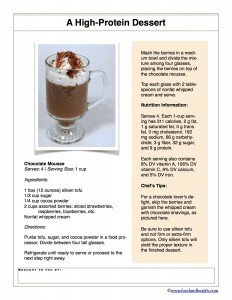Fact Sheet: Plant Protein
October is Vegetarian Awareness Month! We'd like to celebrate by offering this research-based fact sheet about plant protein and its place in the diet...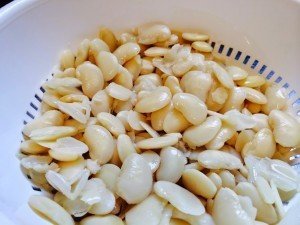 What is Plant Protein?Plant protein is exactly what it sounds like -- protein that comes from a plant. Proteins are considered essential nutrients, and they're classified as macronutrients. There are two other macronutrients: fats and carbohydrates.Proteins are made up of chains of various amino acids, and different proteins can contain different amino acids.Plant proteins play a key role in eating patterns across the globe. According to the study Plant proteins in relation to human protein and amino acid nutrition, "Plant protein foods contribute approximately 65% of the per capita supply of protein on a worldwide basis and approximately 32% in the North American region."How is Plant Protein Different from Animal Protein?Many animal proteins contain all the essential amino acids that the human body needs. Plant proteins, on the other hand, are more varied. Some of them have fewer essential amino acids than animal proteins, which can make it harder for the body to process and use them (source). The way to sidestep this imbalance is to eat a variety of plant proteins. When a different plant protein foods are consumed together, they can contain all the different amino acids that the human body needs. Lots of research confirms this, including the study Plant proteins in relation to human protein and amino acid nutrition, which asserts, "mixtures of plant proteins can serve as a complete and well-balanced source of amino acids that effectively meet human physiological requirements," concluding,"Mixtures of plant proteins can be fully adequate for meeting human requirements."
What is Plant Protein?Plant protein is exactly what it sounds like -- protein that comes from a plant. Proteins are considered essential nutrients, and they're classified as macronutrients. There are two other macronutrients: fats and carbohydrates.Proteins are made up of chains of various amino acids, and different proteins can contain different amino acids.Plant proteins play a key role in eating patterns across the globe. According to the study Plant proteins in relation to human protein and amino acid nutrition, "Plant protein foods contribute approximately 65% of the per capita supply of protein on a worldwide basis and approximately 32% in the North American region."How is Plant Protein Different from Animal Protein?Many animal proteins contain all the essential amino acids that the human body needs. Plant proteins, on the other hand, are more varied. Some of them have fewer essential amino acids than animal proteins, which can make it harder for the body to process and use them (source). The way to sidestep this imbalance is to eat a variety of plant proteins. When a different plant protein foods are consumed together, they can contain all the different amino acids that the human body needs. Lots of research confirms this, including the study Plant proteins in relation to human protein and amino acid nutrition, which asserts, "mixtures of plant proteins can serve as a complete and well-balanced source of amino acids that effectively meet human physiological requirements," concluding,"Mixtures of plant proteins can be fully adequate for meeting human requirements." Variety is especially important when it comes to protein foods -- both plant and animal. The Dietary Guidelines for Americans recommend that people eat protein foods from a variety of sources, asserting, "Consumption of a balanced variety of protein foods can contribute to improved nutrient intake and health benefits." Why is this so important? In addition to ensuring that people get enough of each essential amino acid, eating a variety of protein foods means variation from a few protein staples that aren't as good for people's health. Many animal sources of protein are also loaded with saturated fat. Steaks, sausages, bacon, and drumsticks are all examples of animal protein foods that are high in saturated fat. MyPlate insists "To lower risk for heart disease, [people should] cut back on foods containing saturated fats." The Dietary Guidelines for Americans back up this assertion, advising people to "Replace protein foods that are higher in solid fats with choices that are lower in solid fats and calories and/or are sources of oils."Plant proteins do not contain nearly the amount of saturated fat that many animal protein sources feature. In fact, most plant protein doesn't have any saturated fat at all! In addition to not containing this unhealthful fat, these plant sources of protein may actually have health-boosting effects. According to the study, Health benefits and risks of plant proteins, "A sufficient consumption of plant proteins has [...] protective effects against chronic degenerative diseases." The authors of another study, Plant and animal protein intakes are differently associated with nutrient adequacy of the diet of French adults, assert "Plant protein is a robust marker of a healthy diet." There are many other sources that highlight the positive health impact of plant-protein-based foods, which is why MyPlate recommends that people "Eat plant protein foods more often."
Variety is especially important when it comes to protein foods -- both plant and animal. The Dietary Guidelines for Americans recommend that people eat protein foods from a variety of sources, asserting, "Consumption of a balanced variety of protein foods can contribute to improved nutrient intake and health benefits." Why is this so important? In addition to ensuring that people get enough of each essential amino acid, eating a variety of protein foods means variation from a few protein staples that aren't as good for people's health. Many animal sources of protein are also loaded with saturated fat. Steaks, sausages, bacon, and drumsticks are all examples of animal protein foods that are high in saturated fat. MyPlate insists "To lower risk for heart disease, [people should] cut back on foods containing saturated fats." The Dietary Guidelines for Americans back up this assertion, advising people to "Replace protein foods that are higher in solid fats with choices that are lower in solid fats and calories and/or are sources of oils."Plant proteins do not contain nearly the amount of saturated fat that many animal protein sources feature. In fact, most plant protein doesn't have any saturated fat at all! In addition to not containing this unhealthful fat, these plant sources of protein may actually have health-boosting effects. According to the study, Health benefits and risks of plant proteins, "A sufficient consumption of plant proteins has [...] protective effects against chronic degenerative diseases." The authors of another study, Plant and animal protein intakes are differently associated with nutrient adequacy of the diet of French adults, assert "Plant protein is a robust marker of a healthy diet." There are many other sources that highlight the positive health impact of plant-protein-based foods, which is why MyPlate recommends that people "Eat plant protein foods more often."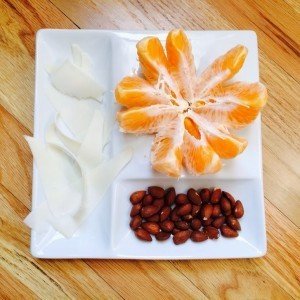 Which Foods Contain Plant Protein?The most common foods that contain plant protein include...
Which Foods Contain Plant Protein?The most common foods that contain plant protein include...
- Beans/legumes
- Black beans
- Chickpeas/garbanzo beans
- Kidney beans
- Lentils
- Pinto beans
- Peas
- Tofu and other soy products
- Nuts
- Almonds
- Cashews
- Brazil nuts
- Peanuts
- Pecans
- Seeds
- Pumpkin seeds
- Sesame seeds
- Sunflower seeds
The following grain foods also contain some plant protein...
- Buckwheat
- Bulgur
- Oats
- Quinoa
- Rice
- Whole wheat products
- Bread
- Pasta
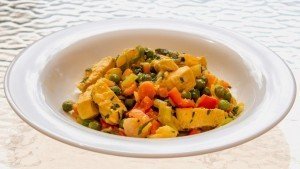 How Can I Cook with Plant Protein?Here are a few great recipes for tasty foods that contain plant protein...
How Can I Cook with Plant Protein?Here are a few great recipes for tasty foods that contain plant protein...
References:
- Dietary Guidelines for Americans (USDA, USDHHS)
- Health benefits and risks of plant proteins (U.S. National Library of Medicine)
- Plant and animal protein intakes are differently associated with nutrient adequacy of the diet of French adults (Journal of Nutrition)
- Plant proteins in relation to human protein and amino acid nutrition (American Journal of Clinical Nutrition)
- What are Solid Fats? (USDA)
- With Protein Foods, Variety is Key (MyPlate)
For More Information:We're here to help you look your very best, right now, so don't miss these Vegetarian Awareness Month resources from the Nutrition Education Store!
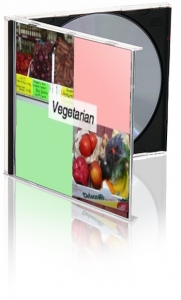
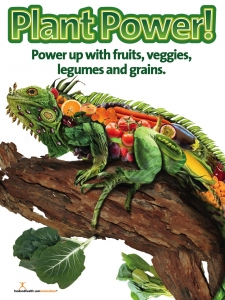 Handouts:For a handout with the highlights of this post, check out the Plant Protein Factsheet. It's free and available now!
Handouts:For a handout with the highlights of this post, check out the Plant Protein Factsheet. It's free and available now!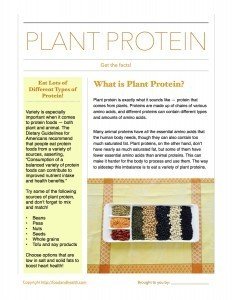 For a great cooking handout that features a creative spin on plant protein, check out the member-exclusive post High-Protein Chocolate Mousse.
For a great cooking handout that features a creative spin on plant protein, check out the member-exclusive post High-Protein Chocolate Mousse.